


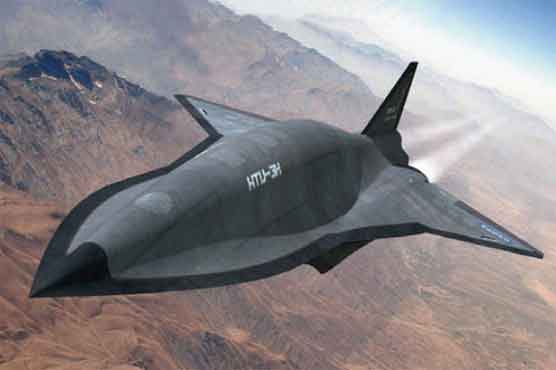
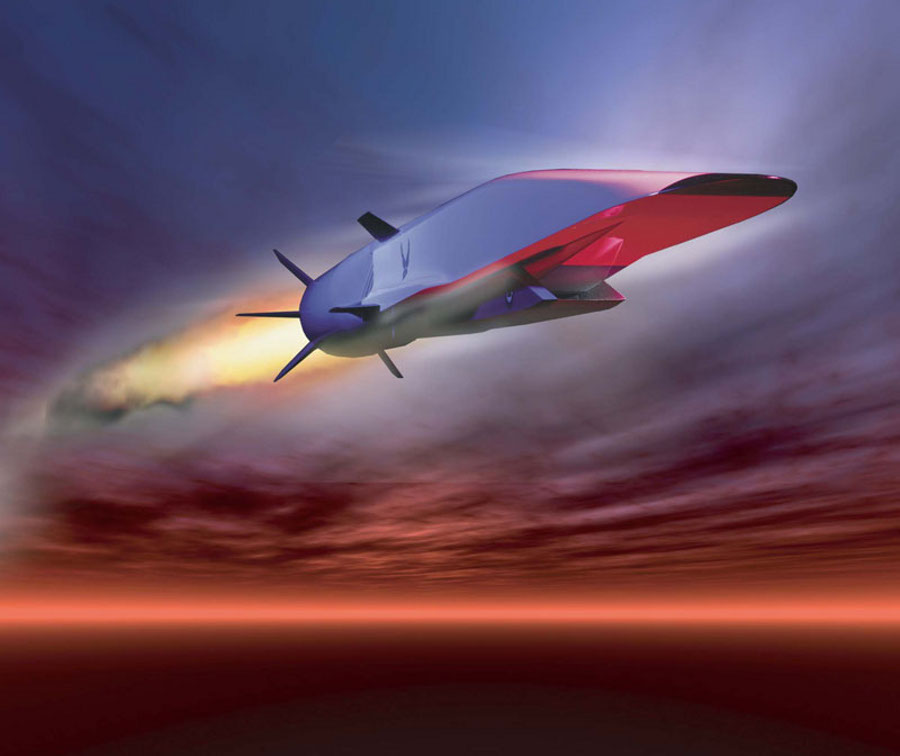


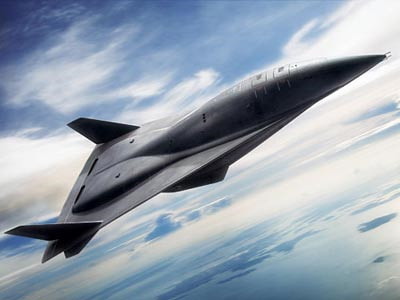
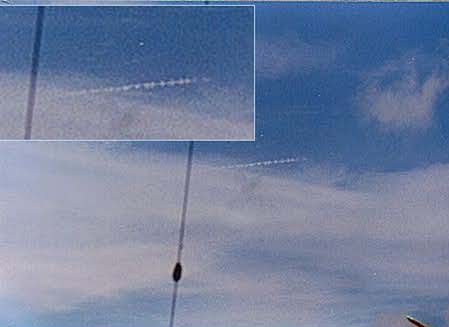






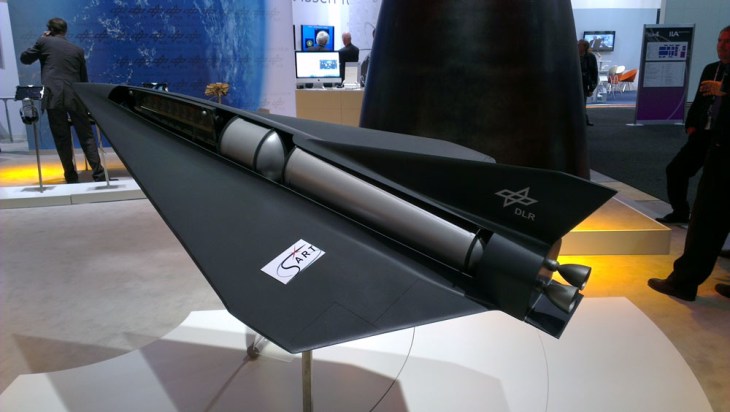




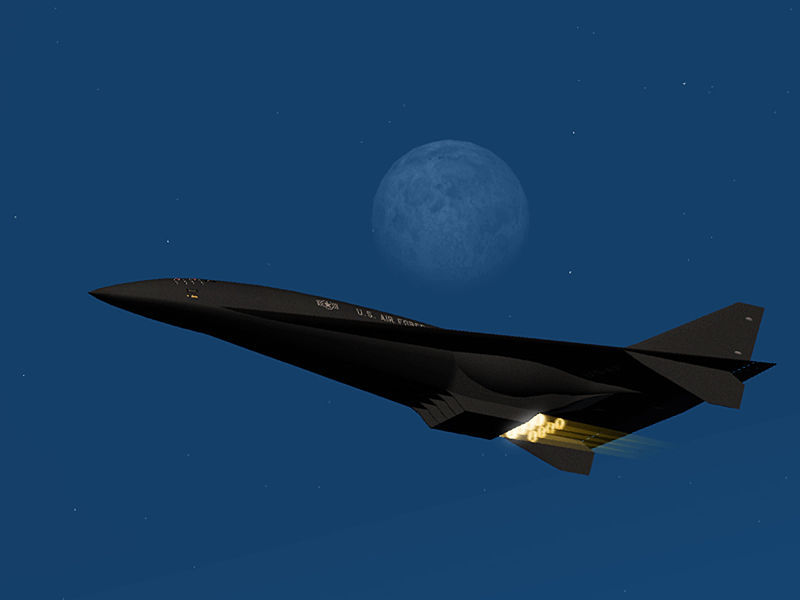
Aurora (aircraft)
From Wikipedia, the free encyclopedia
For the Canadian maritime patrol aircraft, see Lockheed CP-140 Aurora.
| Aurora | |
|---|---|

An artist's conception of the Aurora aircraft
|
Aurora was a rumored mid-1980s American reconnaissance aircraft. There is no substantial evidence that it was ever built or flown and it has been termed a myth.[1][2]
The U.S. government has consistently denied such an aircraft was ever built. Aviation and space reference site Aerospaceweb.org concluded "The evidence supporting the Aurora is circumstantial or pure conjecture, there is little reason to contradict the government's position."[1]
Others come to different conclusions.[3] In 2006, veteran black project watcher and aviation writer Bill Sweetman said, "Does Aurora exist? Years of pursuit have led me to believe that, yes, Aurora is most likely in active development, spurred on by recent advances that have allowed technology to catch up with the ambition that launched the program a generation ago."[4]
Contents
Background
The Aurora legend started in March 1990, when Aviation Week & Space Technology magazine broke the news that the term "Aurora" had been inadvertently included in the 1985 U.S. budget, as an allocation of $455 million for "black aircraft production" in FY 1987.[5] According to Aviation Week, Project Aurora referred to a group of exotic aircraft, and not to one particular airframe. Funding of the project allegedly reached $2.3 billion in fiscal 1987, according to a 1986 procurement document obtained by Aviation Week. In the 1994 book Skunk Works, Ben Rich, the former head of Lockheed's Skunk Works division, wrote that the Aurora was the budgetary code name for the stealth bomber fly-off that resulted in the B-2 Spirit.[6]Evidence
By the late 1980s, many aerospace industry observers believed that the U.S. had the technological capability to build a Mach-5 replacement for the aging Lockheed SR-71 Blackbird. Detailed examinations of the U.S. defense budget claimed to have found money missing or channeled into black projects.[7] By the mid-1990s, reports surfaced of sightings of unidentified aircraft flying over California and the United Kingdom involving odd-shaped contrails, sonic booms and related phenomena that suggested the US had developed such an aircraft. Nothing ever linked any of these observations to any program or aircraft type, but the name Aurora was often tagged on these as a way of explaining the observations.[1]British sighting claims
In late August 1989, while working as an engineer on the jack-up barge GSF Galveston Key in the North Sea, Chris Gibson and another witness saw an unfamiliar isosceles triangle-shaped delta aircraft, apparently refueling from a Boeing KC-135 Stratotanker and accompanied by a pair of F-111 fighter-bombers. Gibson and his friend watched the aircraft for several minutes, until they went out of sight. He subsequently drew a sketch of the formation.Gibson, who had been in the Royal Observer Corps' trophy-winning international aircraft recognition team since 1980, was unable to identify the aircraft. He dismissed suggestions that the aircraft was an F-117, Mirage IV or fully swept wing F-111.[8] When the sighting was made public in 1992, the British Defence Secretary Tom King was told, "There is no knowledge in the MoD of a 'black' programme of this nature, although it would not surprise the relevant desk officers in the Air Staff and Defence Intelligence Staff if it did exist."[9]
A crash at RAF Boscombe Down on 26 September 1994 appeared closely linked to "black" missions, according to a report in AirForces Monthly. Further investigation was hampered by aircraft from the USAF flooding into the base. The crash site was protected from view by firetrucks and tarpaulins and the base was closed to all flights soon after.[10]
American sighting claims
A series of unusual sonic booms was detected in Southern California, beginning in mid- to late-1991 and recorded by U.S. Geological Survey sensors across Southern California used to pinpoint earthquake epicenters. The sonic booms were characteristic of a smaller vehicle rather than the 37-meter long Space Shuttle orbiter. Furthermore, neither the Shuttle nor NASA's single SR-71B was operating on the days the booms had been registered.[11] In the article, "In Plane Sight?" which appeared in the Washington City Paper on 3 July 1992 (pp. 12–13), one of the seismologists, Jim Mori, noted: "We can't tell anything about the vehicle. They seem stronger than other sonic booms that we record once in a while. They've all come on Thursday mornings about the same time, between 4 and 7."[5] Former NASA sonic boom expert Dom Maglieri studied the 15-year old sonic boom data from the California Institute of Technology and has deemed that the data showed "something at 90,000 ft (c. 27.4 km), Mach 4 to Mach 5.2". He also said the booms did not look like those from aircraft that had traveled through the atmosphere many miles away at LAX, rather, they appeared to be booms from a high-altitude aircraft directly above the ground moving at high speeds.[12] The boom signatures of the two different aircraft patterns are wildly different.[4] There was nothing particular to tie these events to any aircraft, but they served to grow the Aurora legend.On 23 March 1992, near Amarillo, Texas, Steven Douglass photographed the "donuts on a rope" contrail and linked this sighting to distinctive sounds. He described the engine noise as: "strange, loud pulsating roar... unique... a deep pulsating rumble that vibrated the house and made the windows shake... similar to rocket engine noise, but deeper, with evenly timed pulses." In addition to providing the first photographs of the distinctive contrail previously reported by many, the significance of this sighting was enhanced by Douglass' reports of intercepts of radio transmissions: "Air-to-air communications... were between an AWACS aircraft with the call sign "Dragnet 51" from Tinker AFB, Oklahoma, and two unknown aircraft using the call signs "Darkstar November" and "Darkstar Mike". Messages consisted of phonetically transmitted alphanumerics. It is not known whether this radio traffic had any association with the "pulser" that had just flown over Amarillo." ("Darkstar" is also a call sign of AWACS aircraft from a different squadron at Tinker AFB)[13] A month later, radio enthusiasts in California monitoring Edwards AFB Radar (callsign "Joshua Control") heard early morning radio transmissions between Joshua and a high flying aircraft using the callsign "Gaspipe". "You're at 67,000 feet, 81 miles out" was heard, followed by "70 miles out now, 36,000 ft, above glideslope." As in the past, nothing linked these observations to any particular aircraft or program, but the attribution to the Aurora helped expand the legend.
In February 1994 former resident of Rachel, Nevada, and Area 51 enthusiast, Chuck Clark claimed to have filmed the Aurora taking off from the Groom Lake facility. In the David Darlington book Area 51: The Dreamland Chronicles, he said:
I even saw the Aurora take off one night - or an aircraft that matched the Aurora's reputed configuration, a sharp delta with twin tails about a hundred and thirty feet long. It taxied out of a lighted hangar at two-thirty A.M. and used a lot of runway to take off. It had one red light on top, but the minute the wheels left the runway, the light went off and that was the last I saw of it. I didn't hear it because the wind was blowing from behind me toward the base." I asked when this had taken place. "February 1994. Obviously they didn't think anybody was out there. It was thirty below zero - probably ninety below with the wind chill factor. I had hiked into White Sides from a different, harder way than usual, and stayed there two or three days among the rocks, under a camouflage tarp with six layers of clothes on. I had an insulated face mask and two sleeping bags, so I didn't present a heat signature. I videotaped the aircraft through a telescope with a five-hundred-millimeter f4 lens coupled via a C-ring to a high-eight digital video camera with five hundred and twenty scan lines of resolution, which is better than TV." The author then asked "Where's the tape?" Locked away. That's a legitimate spyplane; my purpose is not to give away legitimate national defense. When they get ready to unveil it, I'll probably release the tape.[14]
Additional claims
In the controversial claims of Bob Lazar, he states that during his employment at the mysterious S-4 facility in Nevada, he briefly witnessed an Aurora flight while aboard a bus near Groom Lake. He claimed that there was a "tremendous roar" which sounded almost as if "the sky was tearing." Although Lazar only saw the aircraft for a moment through the front of the bus, he described it as being "very large" and having "two huge, square exhausts with vanes in them." Upon speaking with his supervisor, Lazar claims he was informed that the aircraft was indeed an "Aurora," a "high altitude research plane." He was also told that the aircraft was powered by "liquid methane."[15]By 1996 reports associated with the Aurora name dropped off in frequency, suggesting to people who believed that the aircraft existed that it had only ever been a prototype or that it had had a short service life.[1]
In 2000, Aberdeen Press and Journal writer Nic Outterside wrote a piece on US stealth technology in Scotland. Citing confidential 'sources' he alleged RAF/USAF Machrihanish in Kintyre, Argyll to be a base for Aurora aircraft. Machrihanish's almost two-mile-long long runway makes it suitable for high-altitude and experimental aircraft with the fenced-off coastal approach making it ideal for takeoffs and landings to be made well away from eyes or cameras of press and public. 'Oceanic Air Traffic Control at Prestwick' Outterside says, 'also tracked fast-moving radar blips. It was claimed by staff that a "hypersonic jet was the only rational conclusion" for the readings.'[16]
In 2006, aviation writer Bill Sweetman put together 20 years of examining budget "holes", unexplained sonic booms, along with the Gibson sighting and concluded: "This evidence helps establish the program's initial existence. My investigations continue to turn up evidence that suggests current activity. For example, having spent years sifting through military budgets, tracking untraceable dollars and code names, I learned how to sort out where money was going. This year, when I looked at the Air Force operations budget in detail, I found a $9-billion black hole that seems a perfect fit for a project like Aurora."[4]
In February and March of 2014, an aircraft matching this description was photographed multiple times over Kansas and Texas in daylight. In February 2014, an amateur photographer Jeff Templin snapped pictures of a triangular aircraft while photographing wildlife in Kansas.[17] On Mar 10, 2014 Steve Douglass and Dean Muskett photographed a triangular shaped aircraft giving off a long contrail over Amarillo, Texas during daylight. Bill Sweetman, Graham Warwick, and Guy Norris of Aviation Week all agree that "the photos show something real."[18]
Lockheed unveils SR-72 hypersonic Mach 6 scramjet spy plane
- By Sebastian Anthony on November 6, 2013 at 2:52 pm
- 40 Comments
- http://www.extremetech.com/

Lockheed Martin’s Skunk Works has confirmed that it is developing the SR-72 spy plane. The successor to the SR-71 Blackbird, which was capable of Mach 3.5, the SR-72 will be a hypersonic unmanned aircraft capable of Mach 6, or just over 4,500 mph. At hypersonic speeds, the SR-72 will be able to traverse any continent in around an hour — meaning, if they’re strategically positioned around the world on aircraft carriers, the US military can strike or surveil any location on Earth in about an hour. It is also suspected that the SR-72′s hypersonic engine tech — some kind of hybrid scramjet — will find its way into the US military’s High Speed Strike Weapon (HSSW), a missile that can theoretically strike anywhere on Earth in just a few minutes.
The SR-71, or Blackbird as you probably know it, was the pinnacle of the US military’s Cold War reconnaissance efforts. Introduced in 1966, the Blackbird, with its hybrid turbojet/ramjet engines, was the fastest manned aircraft in the sky until it was retired in 1998. Despite being utterly massive — 107 feet (32 meters) long with a 55-foot (17-meter) wingspan — the SR-71 only had two crew and no weapons (it was loaded up with cameras, radio antennae, and other surveillance-oriented loadout). Due to high running costs, and reallocation of funds towards other efforts such as UAVs, the SR-71 was retired after 32 years of active service. Of 32 aircraft that were built, 12 were lost in accidents — but none were ever shot down or captured by the enemy.
The SR-72, despite the similar name, is a completely new plane. At the moment, the SR-72 is still only a concept, though Lockheed has now confirmed that the plane is in active development. An optionally piloted scale version of the plane with a single engine will be built in 2018, with test flights scheduled for 2023. If all goes to plan (funding hasn’t yet been secured by Lockheed Martin), a full-size SR-72 (about 100 feet long) will be built and tested by 2030. As it stands, the current plan is for the SR-72 to be unmanned. It will be a very, very large drone. It will probably be unarmed, too, and outfitted entirely for intelligence gathering, though it’s too early to say for sure.
While the SR-72 will undoubtedly be a paragon of stealth and fashioned from monolithic crystals of titanium wrapped in carbon fiber, its defining feature is its operational speed of Mach 6 — or 4,567 mph (7,350 kph). At this speed, the SR-72 can cross the Atlantic (or Europe or China or…) in about an hour — or circumnavigate the planet in six hours. At an operational altitude of around 80,000 feet (24,300 meters) and Mach 6, the SR-72 will be almost impossible to shoot down.
To reach Mach 6, some aeronautic magic needs to occur, otherwise we would’ve built a Mach 6 aircraft years ago. Basically, turbofan engines — like you would find in every big airliner — are only really efficient up to around Mach 2.5. Ramjets can then take you to around Mach 4, but then they too lose their efficiency. To get to Mach 6, Lockheed’s Skunk Works lab — which has developed such luminaries as the U-2, SR-71, F-22, and F-35 — is working with Aerojet Rocketdyne to create a turbojet/scramjet hybrid engine that uses a turbine at low speeds, and a scramjet (supersonic combustion ramjet) at higher speeds. Like the SR-71, these engines will have the same inlet and nozzle, with some kind of mechanical system that shifts the airflow between the two portions of the engine as airspeed changes. Whereas a ramjet decelerates incoming air to subsonic speeds, a scramjet is supersonic throughout, allowing for much higher air speeds (no one knows quite how fast, but we’re talking about at least Mach 10).
The SR-72 isn’t the first attempt to crack hypersonic flight, too. Boeing has been working on the X-51 scramjet tech demo for the last decade, and in 2013 it finally completed a successful hypersonic (Mach 5.1, 3,400 mph, 5,400 kph) test flight. The scramjet within the X-51 may eventually find its way into the US military’s High Speed Strike Weapon, an air-launched missile that travels fast enough to evade early warning systems and countermeasures. Hybrid engines, such as the SR-72′s, may eventually find their way into long-range missiles that can travel great distances to strike almost anywhere on Earth.
Now read: Reusable jet-cum-rocket spaceplane could fly you anywhere on Earth in four hours
http://nextbigfuture.com/
December 25, 2014
NASA seed funds SR 72 hypersonic drones as other countries race for hypersonic missiles
NASA funded a parametric design study to establish the viability of a Turbine Based Combined Cycle (TBCC) Propulsion system consisting of integrating several combinations of near-term turbine engine solutions and a very low Mach ignition Dual Mode RamJet (DMRJ) in the SR-72 vehicle concept.The SR72 drone would fly at speeds of Mach 6.0, or 4,500 mph. That’s almost double the speed of the Lockheed SR-71 Blackbird, which made its first flight 50 years ago.
Lockheed Martin is working with Aerojet Rocketdyne to find a way to integrate a turbine engine, which would get the plane up to Mach 3, with a supersonic ramjet engine, or scramjet, to push it to Mach 6.
Lockheed believes it can develop its SR-72 by 2030.
The $892,292 contract funds a design study to determine the viability of a TBCC propulsion system by combining one of several current turbine engines, with a very low Mach ignition Dual Mode Ramjet (DMRJ). NASA previously funded a Lockheed Martin study that found speeds up to Mach 7 could be achieved with a dual-mode engine combining turbine and ramjet technologies. The problem with hypersonic propulsion has always been the gap between the highest speed capabilities of a turbojet, from around Mach 2.2 to the lowest speed of a ramjet at Mach 4. Typical turbine engines cannot achieve high enough speeds for a ramjet to take over and continue accelerating. The NASA-Lockheed study is looking at the possibility of a higher-speed turbine engine or a ramjet that can function in a turbine engine's slower flight envelope; the DARPA HTV-3X had demonstrated a low-speed ramjet that could operate below Mach 3. Existing turbofan engines powering jet fighters and other experimental designs are being considered for modification. If the study is successful, NASA will fund a demonstrator to test the DMRJ in a flight research vehicle
http://www.ibtimes.com/
Lockheed Martin’s SR-72 Hypersonic Plane Could Be Built For Under $1B, Likely To Be Ready In 2030s

Lockheed
Martin Corp. said Tuesday it was on the verge of a technological
breakthrough that would allow its conceptual SR-72 hypersonic plane to
reach six times the speed of sound, or Mach 6, according to reports.
Marillyn Hewson, CEO of Lockheed, said that a hypersonic demonstrator
aircraft the size of an F-22 stealth fighter could be built for less
than $1 billion.
The company is working on an “aerodynamic configuration” that would allow the successor to the famed SR-71 Blackbird spy plane to fly at Mach 6 speed, Hewson said, according to Reuters. Such a plane would give the U.S. military a major advantage, allowing it to reach targets before the enemy could react.
Orlando Carvalho, head of Lockheed's aeronautics division, said the U.S. government's current plan was to manufacture and deploy a hypersonic weapon, before moving on to develop and deploy a hypersonic aircraft, Reuters reported. He added that the U.S. could make a hypersonic weapon by the 2020s, but a hypersonic aircraft like the SR-72 would be manufactured in the 2030s.
Carvalho also said that Lockheed has been working on an engine for the hypersonic aircraft with Aerojet Rocketdyne, a rocket manufacturer, Financial Times reported. He added that innovation was “much more rapid” now than in the past because of Aerojet’s engine work and Lockheed’s work on aircraft materials, the report added.
“That said, it’s going to require a significant amount of development work, investment and maturing of the technology,” Carvalho, according to the Financial Times.
Lockheed announced plans for the SR-72 hypersonic plane in 2013, billing it as an aircraft that would fly twice as fast as the SR-71 Blackbird.
The company is working on an “aerodynamic configuration” that would allow the successor to the famed SR-71 Blackbird spy plane to fly at Mach 6 speed, Hewson said, according to Reuters. Such a plane would give the U.S. military a major advantage, allowing it to reach targets before the enemy could react.
Orlando Carvalho, head of Lockheed's aeronautics division, said the U.S. government's current plan was to manufacture and deploy a hypersonic weapon, before moving on to develop and deploy a hypersonic aircraft, Reuters reported. He added that the U.S. could make a hypersonic weapon by the 2020s, but a hypersonic aircraft like the SR-72 would be manufactured in the 2030s.
Carvalho also said that Lockheed has been working on an engine for the hypersonic aircraft with Aerojet Rocketdyne, a rocket manufacturer, Financial Times reported. He added that innovation was “much more rapid” now than in the past because of Aerojet’s engine work and Lockheed’s work on aircraft materials, the report added.
“That said, it’s going to require a significant amount of development work, investment and maturing of the technology,” Carvalho, according to the Financial Times.
Lockheed announced plans for the SR-72 hypersonic plane in 2013, billing it as an aircraft that would fly twice as fast as the SR-71 Blackbird.
China hypersonic missile test
China conducted the third flight test of a new hypersonic missile this week as part of its strategic nuclear program and efforts to develop delivery vehicles capable of defeating U.S. countermeasures, defense officials said.The flight test of the developmental Wu-14 hypersonic glide vehicle was monitored by U.S. intelligence agencies Tuesday during a flight test in western China.
The latest flight test followed earlier tests of the Wu-14 on Jan. 9 and Aug. 7. The three tests indicate that China’s development of a strike vehicle capable of traveling up to eight times the speed of sound is a high-priority element in China’s large-scale military buildup.
China plans to deploy its high-speed glide vehicle by 2020 and a scramjet powered hypersonic vehicle by 2025.
Russia, India, Australia and many other countries are working towards hypersonic missiles.
http://nextbigfuture.com/
Russia Test-Fires Hypersonic Zircon Missiles
The first tests of the Russian Navy’s new hypersonic Zircon cruise missiles have been launched in Russia. The cruise missiles are expected to reach five or six times the speed of sound (Mach 5 or Mach 6).
It will be mounted on Russia's newest fifth-generation Husky-class nuclear submarines which are currently under development.
It will be mounted on Russia's newest fifth-generation Husky-class nuclear submarines which are currently under development.
Modern Russian anti-ship missiles, like Onyx, can reach up to Mach 2.6 (750 meters per second). The sea-based Kalibr cruise missile travels at a Mach 0.9 speed, but while approaching the target, its warhead speeds up to Mach 2.9.
The Zircon hypersonic cruise missiles will also be used for Russian battleship Pyotr Veliky, Tass news agency reported last month. The range of the missile is likely to be just over 248 miles.
"The Pyotr Veliky will start repairs in the third or fourth quarter of 2019. Repairs and upgrade are due for completion in late 2022, the ship to be equipped with Zircon hypersonic anti-ship missiles," a source told Tass at the time.





No comments:
Post a Comment